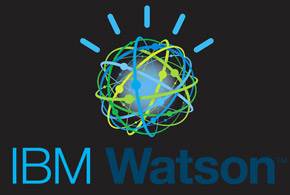IBM and the United States Tennis Association (USTA) partner to enhance US Open fan experience with cognitive computing, cloud and analytics
IBM is using its Bluemix cloud development platform to bring cognitive experience to fans watching the US Open tennis tournament.
John Kent, program manager for IBM Global Sponsorship Marketing, who is responsible for all the technology and experiences IBM creates for the US Open, said the tournament will for the first time tap into Bluemix and its cognitive intelligence tools — using the platform to build an augmented fan experience for the tournament’s 5 million online fans when they tap into videos and photos from the matches.
In essence, IBM is using Bluemix to help bring its Watson cognitive computing technology to the fore at the US Open. IBM has employed Watson technology at the US Open over the last two years, but Watson was basically behind the scenes. This year IBM is bringing Watson directly to the public.
“Watson made a very limited appearance last year at the US Open and it was predominantly behind the scenes,” Kent said. “So from a public visibility perspective, I would say everything that we’re doing with Watson is new to the public and to the fans this year.”
One new Watson-based feature is a cognitive concierge app that will enhance the experience of fans onsite on the grounds of the Billie Jean King National Tennis Center in Flushing, NY, where the tournament is going on. The apps run on Apple iPad and iPhone as well and Android devices.
The US Open mobile app Guest Services companion features a Watson-powered discovery tool that enables fans to ask questions in natural language and get answers about a range of tournament topics, including transportation and directions, food and drink options, on-site services and more.
“You can ask Watson a question about: ‘Where can I get a hot dog?’ ‘Where can I get a beer?’ ‘Where is the nearest restroom?’ And Watson will return the response back to you,” Kent told eWEEK. “You get to type in your question using natural language and get a response back. It’s enhanced if you’re onsite because there are beacons that help determine where you are on the grounds, so you can be given a more precise answer to where things are based on your location.”
Moreover, because Watson continues to learn with each query, it will refine its knowledge base and be able to provide more precise responses over time.
IBM said its apps also offer an interactive second screen experience for fans watching the US Open on TV.
Meanwhile, IBM also is quietly piloting a project to make fans’ interaction with Watson more conversational, Kent noted. “Right now, with the Watson interface you have to ask a question and you get an answer,” he said. “But we’re trying to make it more conversational using the conversation API that recently came out and we’re working on applying that to the Guest Services feature so that it’s more conversational.”
For example, Kent said IBM has a pilot working where a user can just type in to Watson: “I’m hungry.” And Watson will ask the user what kind of food would they like. If the user says Mexican, it will direct them to the Angry Taco, which is one of the food stands on the grounds.
“So it’s much more conversational and much more like humans interact with one another,” Kent said. “We actually have that functioning with Pepper, our robot interface. It’s a more natural human-to-machine interaction.”
In addition to integrating Watson’s cognitive capabilities into the US Open app, IBM and the United States Tennis Association (USTA) are tapping into other Watson services available through Bluemix to deliver real-time analysis and insights about the tournament, Kent said.
“We have been working with the USTA for over 25 years and since that time things have evolved,” he said. “We’ve gone through doing websites, having mobile sites, to now apps and this year it’s really about bringing Watson and cognitive in and how those technologies can help.”







![[Video] Samsung Outlines AI Vision at The First Look 2026](https://loginby.com/itnews/wp-content/uploads/2026/01/Video-Samsung-Outlines-AI-Vision-at-The-First-Look-2026-100x75.jpg)